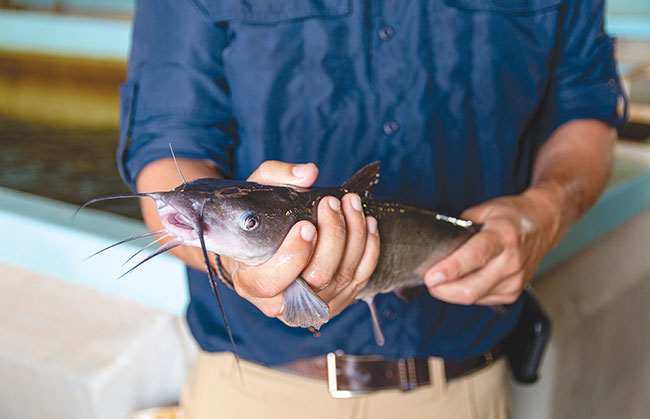- This topic is empty.
- PenulisTulisan-tulisan
- April 4, 2025 pada 6:22 am #620378

Catfish aquaculture plays a pivotal role in global food systems, providing a sustainable source of protein for millions of people.
One of the key challenges in catfish farming is ensuring the fish reach market size in an efficient and timely manner. Several factors influence the time it takes for catfish to grow to a size suitable for harvesting.
These factors range from feed quality to environmental conditions and management practices. Understanding these factors is essential for optimizing production timelines and improving overall farm profitability. This article explores the primary factors that affect the time to market size in catfish aquaculture.
1. Influence of Feed and Nutrition on Growth Rates
Feed quality and nutritional content are crucial factors in determining how quickly catfish grow to market size. High-quality, nutrient-dense feed ensures that catfish receive all the necessary proteins, fats, vitamins, and minerals essential for optimal growth.
The formulation of well-balanced feed, particularly during the early stages of growth, can have a significant impact on the rate at which catfish reach market size. Properly formulated feed that enhances feed conversion efficiency can shorten the time to market, enabling farmers to reach their production goals faster and more sustainably.
2. Role of Water Quality and Environmental Conditions
Water quality and environmental conditions are fundamental factors influencing catfish growth and the time it takes for them to reach market size. Key parameters like water temperature, oxygen levels, pH balance, and the presence of harmful substances significantly affect catfish development.
Optimal water temperatures (around 28-30°C) promote faster metabolic activity and growth, while poor water quality can lead to stress, lower feed intake, and slower growth rates. Ensuring that water conditions are monitored and maintained properly can support healthier fish and faster growth, ultimately reducing the time to market size.
3. Impact of Genetics on Growth Performance
Genetics is another important factor influencing how quickly catfish reach market size. Selective breeding programs focused on traits like fast growth, disease resistance, and adaptability to various environmental conditions can significantly reduce the time to market.
Catfish bred for superior growth performance can achieve marketable sizes in a shorter period, which helps increase farm productivity and profitability.
By prioritizing genetic traits that enhance growth rates, farmers can optimize production cycles and shorten the time to market, while also ensuring a higher level of sustainability in their operations.
4. Management Practices and Farm Operations
Effective management practices and farm operations play a critical role in determining how quickly catfish grow and reach market size. Proper management includes optimizing stocking densities, following consistent feeding schedules, controlling diseases, and managing growth stages efficiently.
Overcrowding, inconsistent feeding, and inadequate disease control can all lead to slower growth rates and longer times to market.
On the other hand, well-executed farm operations that prioritize appropriate stocking, regular health checks, and optimal feeding schedules can maximize the growth potential of catfish, reducing the time it takes for them to reach market size.
5. External Market Factors and Supply Chain Logistics
External market factors and supply chain logistics also influence the time to market size for catfish. Market demand, pricing, and logistical considerations can all affect when farmers choose to harvest their fish.
If the demand for catfish is high and market prices are favorable, farmers may push their fish to grow faster, aiming to reduce the time to market.
Conversely, if market conditions are less favorable, farmers may delay harvest to achieve a larger fish size, extending the production cycle. Additionally, the efficiency of the entire supply chain—from transportation to processing—can impact the timing of harvesting, affecting the overall time to market.
Several factors impact the time it takes for catfish to reach market size, each playing a crucial role in determining the overall production timeline. Feed quality, water quality, genetics, management practices, and external market conditions all interact to influence growth rates.
By effectively managing these factors, catfish farmers can optimize their operations to reach market size more efficiently, ensuring both profitability and sustainability. A thorough understanding of these factors is vital for improving production timelines and meeting the growing demand for catfish in the global market.
Read Also: Sustainable and Natural Growth Enhancement Strategies for Catfish Farming
- PenulisTulisan-tulisan
- Anda harus log masuk untuk membalas topik ini.

